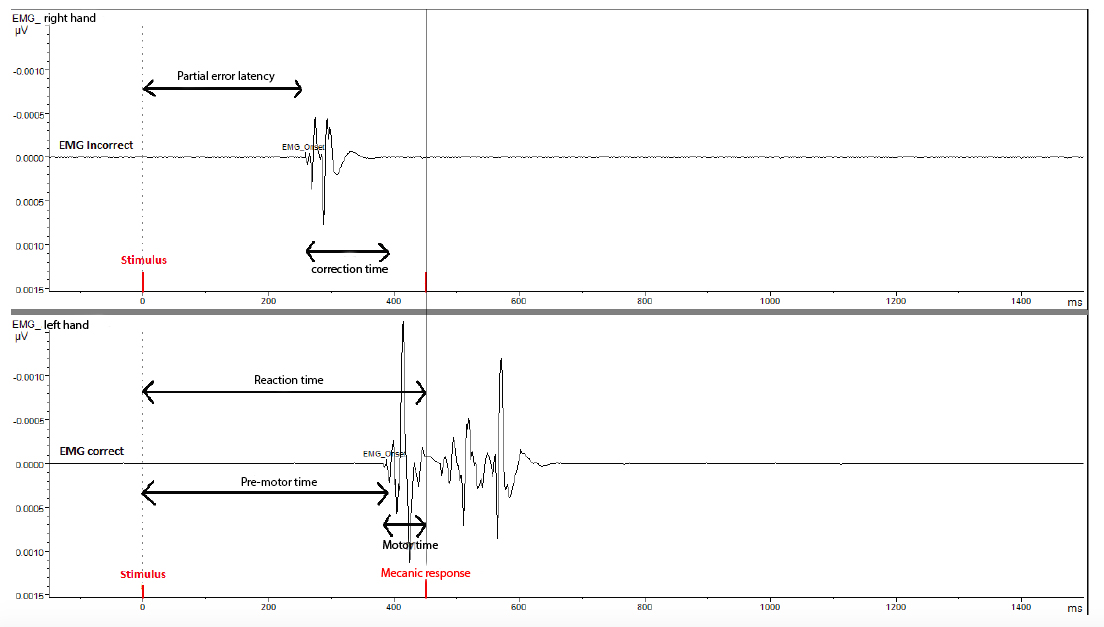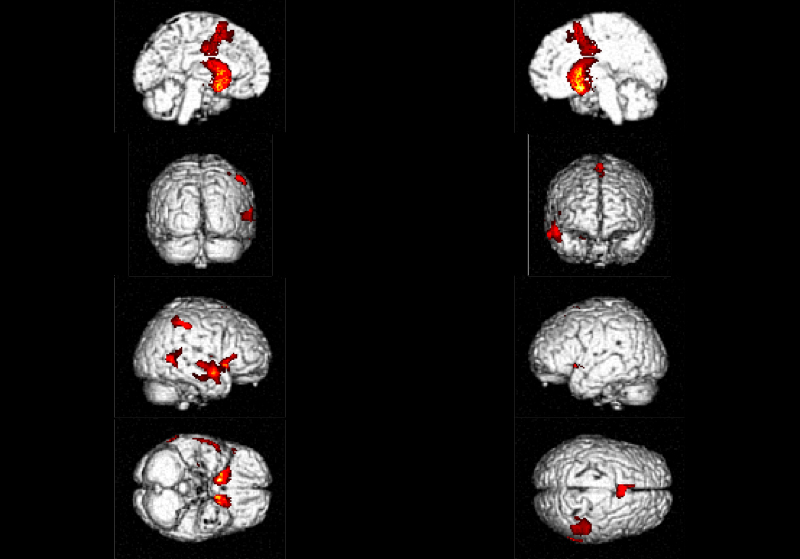Session Information
Date: Sunday, October 7, 2018
Session Title: Huntington's Disease
Session Time: 1:45pm-3:15pm
Location: Hall 3FG
Objective: To describe motor impulsivity in early Huntington disease (HD) with electromyographic (EMG) recordings during a choice reaction time task (Simon Task) and brain metabolic (PET 18FDG) imaging.
Background: Impulsivity is an early behavioral change in Huntington disease, experimentally described as an urge to act/react and/or as the impossibility to stop and correct this impulse. Our aim was to determinate which component of impulsivity was early affected in HD.
Methods: 11 symptomatic genetically proved HD patients (5 ≤ motor UHDRS ≤ 35) and 17 controls performed a choice reaction time task (Simon Task) with electromyographic (EMG) recordings of bilateral muscle agonists. Common behavioral measures of performance and “EMG-augmented” data were analyzed, in particular those reflecting expression and suppression of subthreshold muscle impulses. Thus, we were able to time and count correct responses, errors and partial errors (errors detected (impulse), stopped and turned into a correct response). Assessment of cognitive functions, impulsive behavior (UPPS scale) and a brain PET-TDM 18FDG at rest were also performed.
Results: While HD patients had a higher impulsivity score in the UPPS scale (p<0,05), they didn't make more errors or partial errors (subthreshold of wrong muscle impulses) than controls (p=0,18). Correction rate was similar in both groups (p=0,64). Partial errors latency was similar in both groups (p=0,16) but correction time was significantly longer in HD patients (p<0,01). This correction time was significantly correlated with the TMTB time score (p<0,001) and inversely correlated with the Mattis (p<0,001) and Stroop test (p<0,01) performances. Five cerebral hypometabolic clusters were found in the HD group (left and right striata, bilateral frontal medial, right inferior parietal and right temporal lateral cortices). Striatal metabolism was inversely correlated with the correction time (p<0,05) and with Stroop (p<0,05) and TMTB time (p<0,05) performances.
Conclusions: A dissociation between motor impulsivity (Simon task) and an impulsive personality (UPPS scale) seems to exist. Indeed, the former may more likely be linked to an executive motor control dysfunction than a complex personality disorder. Besides, psychotropic treatments may interact with the task.
References: Abstract submitted to the EAN Congress comittee (June 16-19, 2018) but its acceptation isn’t known yet.
To cite this abstract in AMA style:
S. Grimaldi, E. Guedj, F. Fluchere, T. Hasbroucq, F. Vidal, JP. Azulay. Evaluation of motor impulsivity in Huntington Disease with a choice reaction time task and brain metabolic (PET 18FDG) imaging [abstract]. Mov Disord. 2018; 33 (suppl 2). https://www.mdsabstracts.org/abstract/evaluation-of-motor-impulsivity-in-huntington-disease-with-a-choice-reaction-time-task-and-brain-metabolic-pet-18fdg-imaging/. Accessed April 28, 2025.« Back to 2018 International Congress
MDS Abstracts - https://www.mdsabstracts.org/abstract/evaluation-of-motor-impulsivity-in-huntington-disease-with-a-choice-reaction-time-task-and-brain-metabolic-pet-18fdg-imaging/


